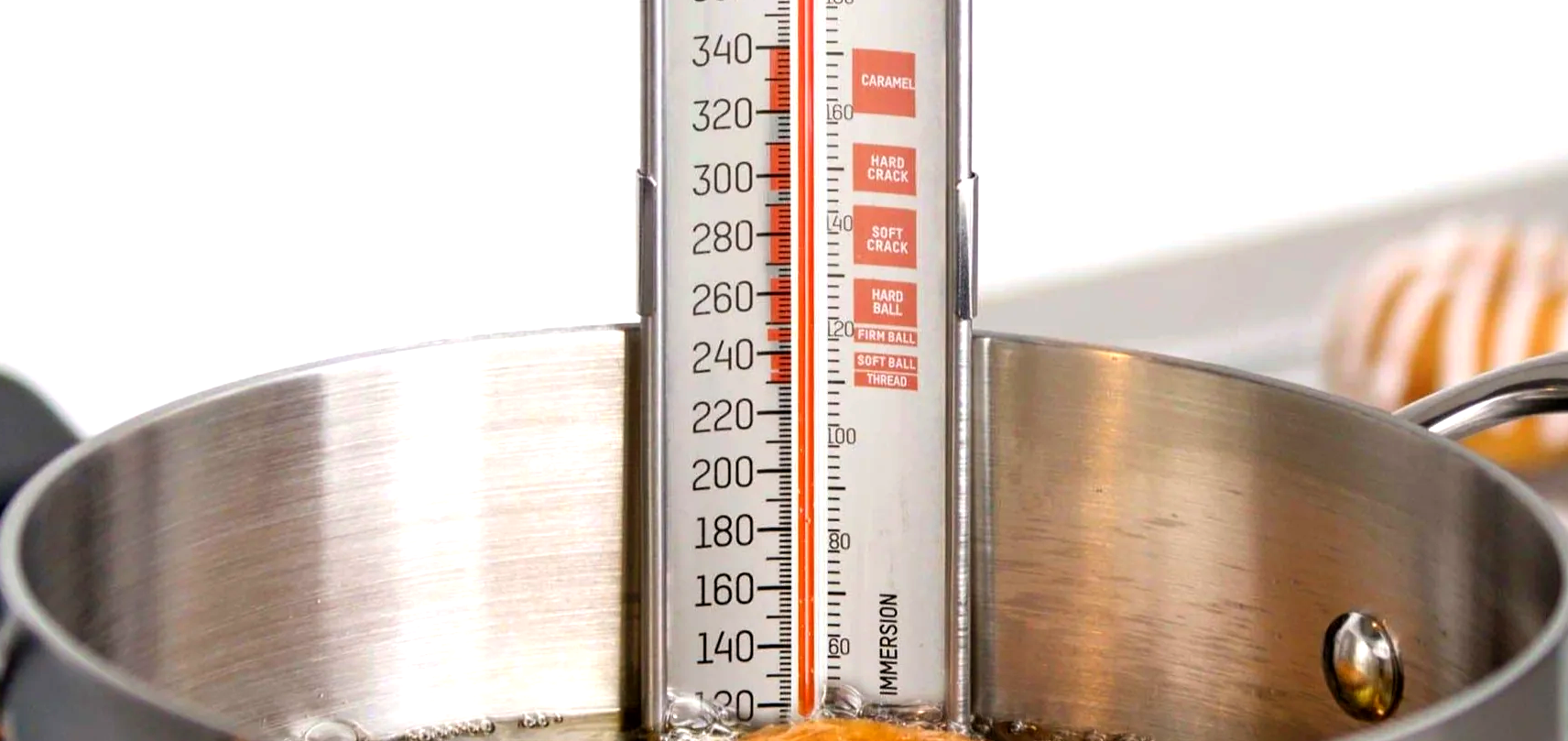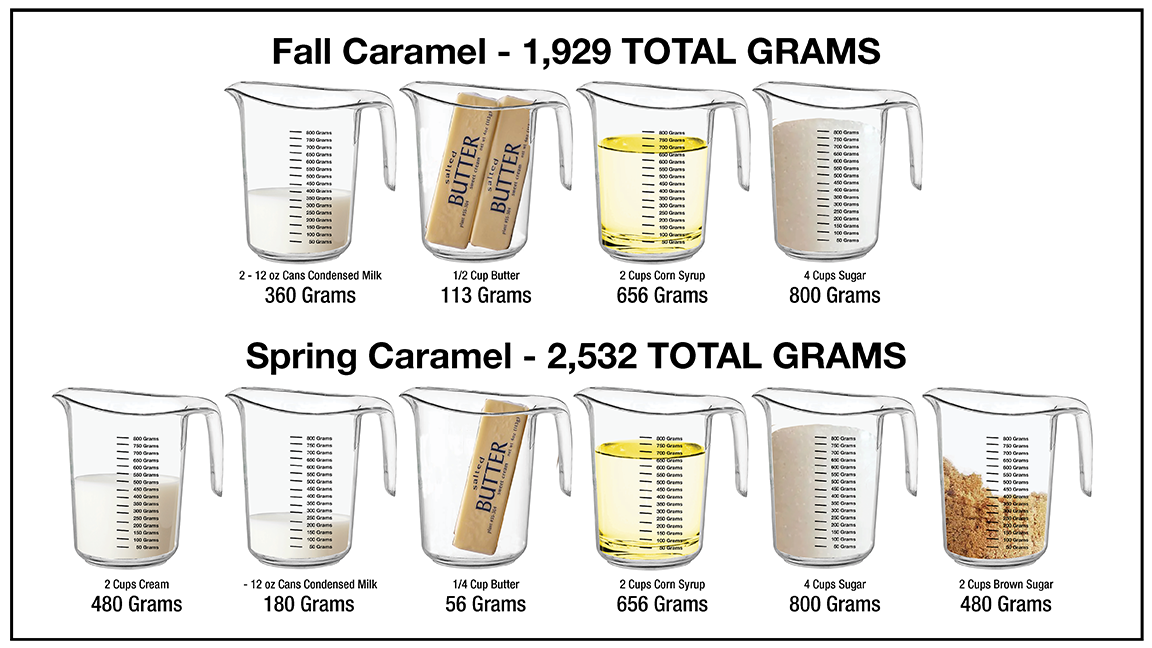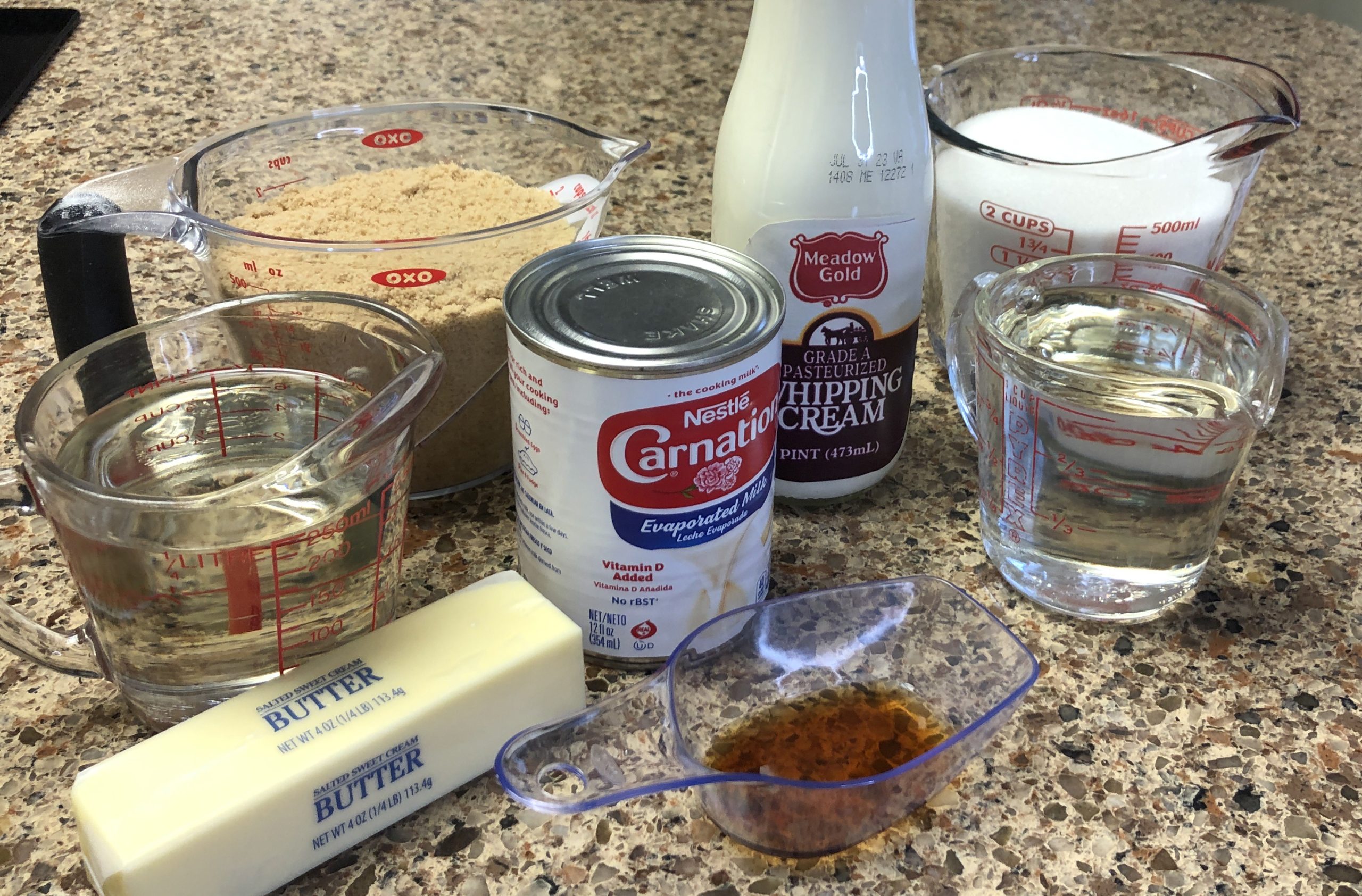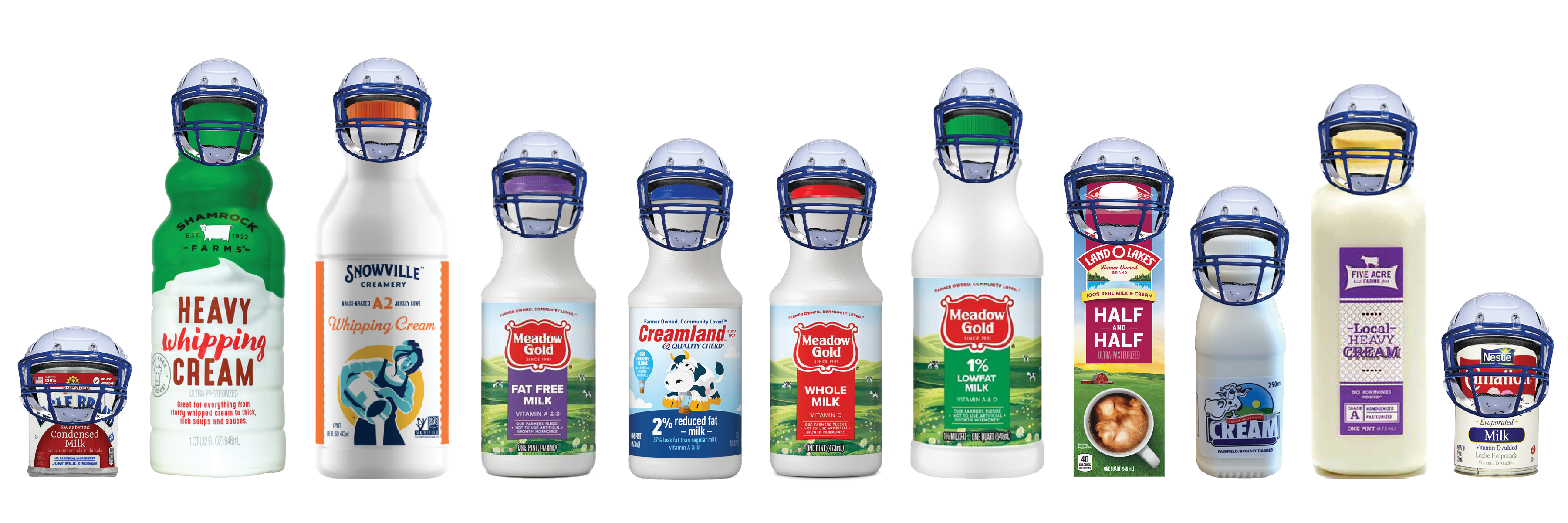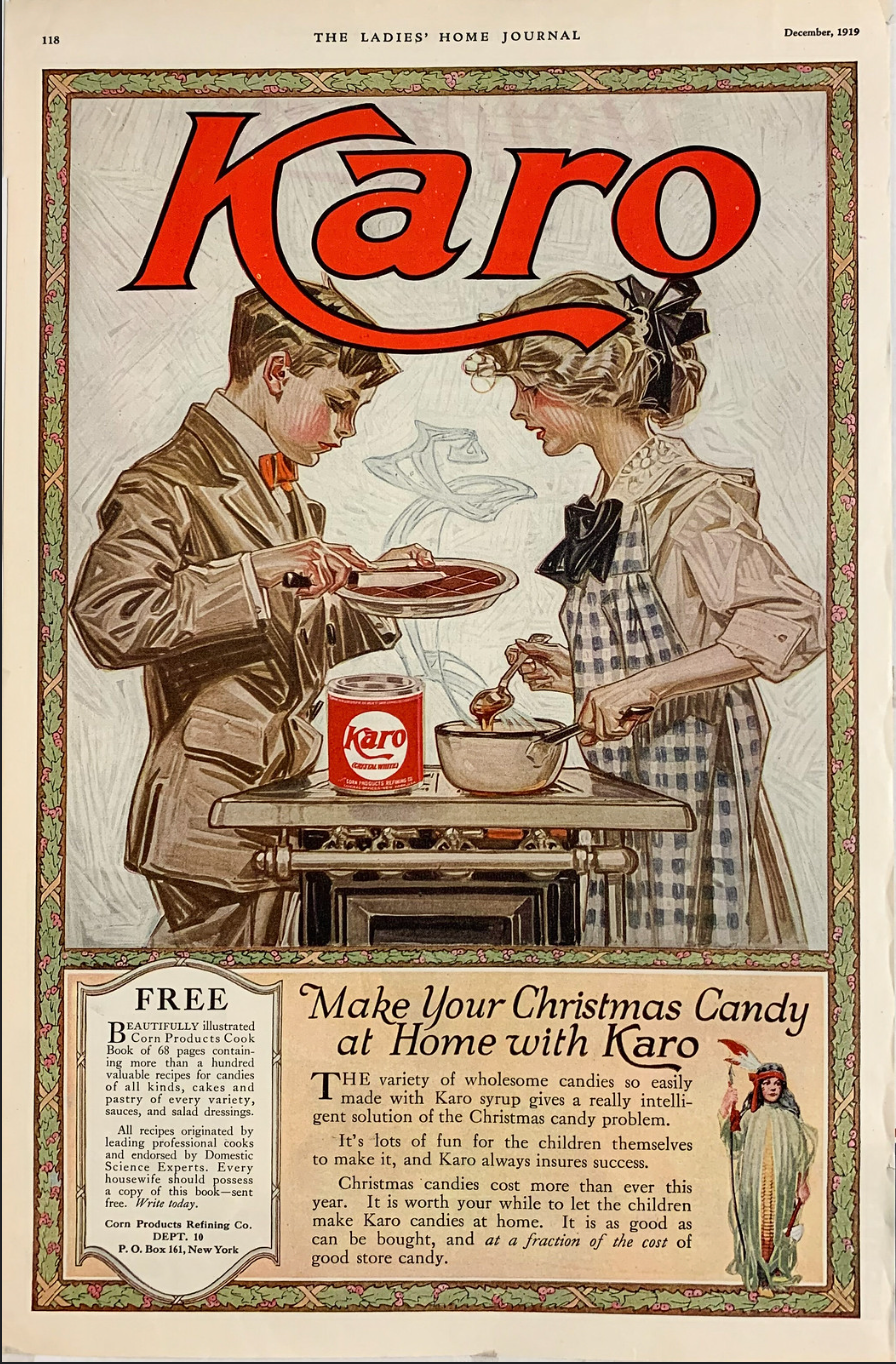For a long time, I struggled with temperature charts, which are plentiful. They all, however, have one common denominator. Sea Level. I live forty-eight hundred feet above sea level, and thus those charts require math. …
The Tale of Two Caramels Let me sum up. We use two different caramel recipes, one in the spring for caramel corn and one in the fall for caramel apples, hand-dipped chocolates (turtles), and just plain caramel hand-dipped. The conflict which caused my brain to go down totally unnecessary rabbit holes was why, since caramel is water, fat, and sugar, do we have two different recipes? Nobody could or would answer that cosmically important question, so I pulled out my science hat, which I admit hadn’t been used since my chemistry class in college 43 years ago, and figured it …
Caramel, the true color of Fall If you’ve just read the spring caramel post, hold on to your dentures because the fall caramel, with its simpler recipe, delivers a caramel with such subtle differences, that a peasant, unfamiliar with the nuances of culinary sublimity, fails to grasp the unparalleled importance of the need for two recipes. Don’t feel discouraged if you still wonder why we use two different recipes. You will want to read the Kent Merrell science behind the two caramel recipes, “The Tale of Two Caramels” click here. Here’s my mother’s recipe. Please note how pure it is. …
Spring Caramel In the article about caramel’s history, we focused on the four ingredients that make caramel the masterpiece that it is; sugar, water, and fat. When I readied to share the recipe for the caramel that we dip, to my utter shock, I found additional ingredients, corn syrup, vanilla, and a touch of salt. That discovery demands an explanation, or clarification, or rebuttal, whichever you choose. Was the previous article wrong, naive, or just inaccurate? So, delving into the corn syrup ingredient controversy, I found myself vindicated. Corn syrup is not an additional ingredient at all, it’s just another …
Even though hand-dipped chocolates only come around our place during the holidays; milk and its teammates hang around our house year-round. Let’s look at each in relation to hand-dipped chocolates.
We’ve got heavy cream, heavy whipping cream, whipping cream, cream, evaporated milk, canned milk, condensed milk, sweet and condensed milk, half-and-half, whole milk, 2% milk, low-fat milk, and nonfat milk, which my grandchildren, when given non-fat or skim milk, claim, are just white water. …
Corn syrup is simply a liquid sweetener. It’s a sugar made from cornstarch. Corn syrup comprises pure glucose, a simple sugar. Table sugar, the white crystal sugar I dump in my Cheerios and you into your coffee in the morning, consists of sucrose, which comprises glucose and fructose. …
The question I am asked more often than any other about our hand dipped chocolates is, “Are hand dipped chocolates healthier than commercial chocolate candy?” Hello! Of course they are, that’s a silly question, even if no one actually ever asked it. Let’s look at the facts. First: The more ingredients you add to any food, the odds that something nefarious sneaks in increases. …
Hand dipped chocolates, even chocolate in general depends on its faithful companion caramel, more than any other. Some argue that chocolate’s BFF is nuts, but wouldn’t that be BFFs are nuts? Or is that BFsF are nuts? Regardless we can’t argue caramel’s importance on our road to confectionary addictions. …
my 11 year old grandson, just as confident as any fine chocolate connoisseur could be, simply said, “It’s the love.” …
The chocolates were not only wildly popular but the fund raising effort was wildly successful. The tradition of hand dipping chocolates began. …

